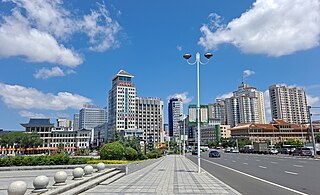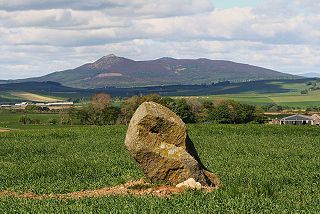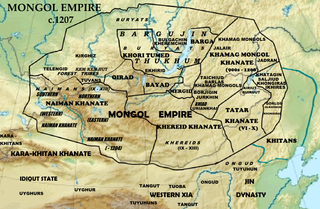
J. P. Sniadecki (born 1979) is an American filmmaker.

J. P. Sniadecki (born 1979) is an American filmmaker.
Sniadecki was born in 1979 in Michigan. [1] He became interested in China through reading Chinese philosophy and first traveled there in 1999. [2] He attended Grand Valley State University for his undergraduate studies, completing his Bachelor of Arts in philosophy and communications in 2002. [3]
He began his graduate studies at Harvard University in 2005, where he studied under Lucien Castaing-Taylor and joined the Sensory Ethnography Lab when it was started in 2006. [4] His short film Songhua, shot along the Songhua River a year after the Jilin chemical plant explosions, documents the relationship between local residents and the river. [5] His 2008 film Demolition documents migrant laborers working at a demolition site in Chengdu. [6]

Sniadecki co-directed Foreign Parts (2010) with Véréna Paravel, whose 2008 film 7 Queens informed their work. It chronicles an auto junkyard in Willets Point, Queens. [7] His 2012 film People's Park, consisting of one long tracking shot, captures different types of activities at People's Park in Chengdu. [8]
Sniadecki co-directed El mar la mar (2017) with Joshua Bonnetta. The film looks at the physical traces of human activity in the Sonoran Desert near the Mexico–United States border. [9] [10] Sniadecki was awarded a Guggenheim Fellowship in 2017. [11] His 2020 film A Shape of Things to Come, co-directed with Lisa Malloy, follows a man named Sundog who appears in El mar la mar. It includes thermographic footage from Jason De León of the Undocumented Migration Project. [12]

Human migration is the movement of people from one place to another, with intentions of settling, permanently or temporarily, at a new location. The movement often occurs over long distances and from one country to another, but internal migration is the dominant form of human migration globally.

The Yanbian Korean Autonomous Prefecture is an autonomous prefecture in the east of Jilin Province, China. Yanbian is bordered to the north by Heilongjiang Province, on the west by Jilin's Baishan City and Jilin City, on the south by North Korea's North Hamgyong Province and on the east by Primorsky Krai in Russia. Yanbian is designated as a Korean autonomous prefecture due to the large number of Chaoxianzu living in the region. The prefectural capital is Yanji and the total area is 42,700 square kilometres (16,500 sq mi).

The Battle of Harlaw was a Scottish clan battle fought on 24 July 1411 just north of Inverurie in Aberdeenshire. It was one of a series of battles fought during the Middle Ages between the barons of northeast Scotland and those from the west coast.
In cultural anthropology and cultural geography, cultural diffusion, as conceptualized by Leo Frobenius in his 1897/98 publication Der westafrikanische Kulturkreis, is the spread of cultural items—such as ideas, styles, religions, technologies, languages—between individuals, whether within a single culture or from one culture to another. It is distinct from the diffusion of innovations within a specific culture. Examples of diffusion include the spread of the war chariot and iron smelting in ancient times, and the use of automobiles and Western business suits in the 20th century.

Visual anthropology is a subfield of social anthropology that is concerned, in part, with the study and production of ethnographic photography, film and, since the mid-1990s, new media. More recently it has been used by historians of science and visual culture. Although sometimes wrongly conflated with ethnographic film, visual anthropology encompasses much more, including the anthropological study of all visual representations such as dance and other kinds of performance, museums and archiving, all visual arts, and the production and reception of mass media. Histories and analyses of representations from many cultures are part of visual anthropology: research topics include sandpaintings, tattoos, sculptures and reliefs, cave paintings, scrimshaw, jewelry, hieroglyphics, paintings and photographs. Also within the province of the subfield are studies of human vision, properties of media, the relationship of visual form and function, and applied, collaborative uses of visual representations.

Danny Lyon is an American photographer and filmmaker.

El Dorado is a 1966 American Western film directed and produced by Howard Hawks and starring John Wayne and Robert Mitchum. Written by Leigh Brackett and loosely based on the novel The Stars in Their Courses by Harry Brown, the film is about a gunfighter who comes to the aid of an old friend who is a drunken sheriff struggling to defend a rancher and his family against another rancher trying to steal their water. The supporting cast features James Caan, Charlene Holt, Paul Fix, Arthur Hunnicutt, Michele Carey, R. G. Armstrong, Ed Asner, Christopher George, Adam Roarke and Jim Davis.
Chain migration is the social process by which immigrants from a particular area follow others from that area to a particular destination. The destination may be in another country or in a new location within the same country.

Waves of Chinese emigration have happened throughout history. They include the emigration to Southeast Asia beginning from the 10th century during the Tang dynasty, to the Americas during the 19th century, particularly during the California gold rush in the mid-1800s; general emigration initially around the early to mid 20th century which was mainly caused by corruption, starvation, and war due to the Warlord Era, the Second Sino-Japanese War and the Chinese Civil War; and finally elective emigration to various countries. Most emigrants were peasants and manual laborers, although there were also educated individuals who brought their various expertises to their new destinations.

Uriankhai is a term of address applied by the Mongols to a group of forest peoples of the North, who include the Turkic-speaking Tuvans and Yakuts, while sometimes it is also applied to the Mongolian-speaking Altai Uriankhai. The Uriankhai included the western forest Uriankhai tribe and the Transbaikal Uriankhai tribe, with the former recorded in Chinese sources as Chinese: 兀良哈; pinyin: Wùliánghā). It is also the origin of the Korean term "olangkae", 오랑캐, meaning barbarian.

An ethnographic film is a non-fiction film, often similar to a documentary film, historically shot by Western filmmakers and dealing with non-Western people, and sometimes associated with anthropology. Definitions of the term are not definitive. Some academics claim it is more documentary, less anthropology, while others think it rests somewhere between the fields of anthropology and documentary films.
The Sensory Ethnography Lab (SEL) at Harvard University is an interdisciplinary center for the making of anthropologically informed works of media that combine aesthetics and ethnography. Production courses associated with the SEL are offered through Anthropology, Visual and Environmental Studies, and the Graduate School of Design.

Lourdes Gutiérrez Nájera is an American cultural anthropologist. She is a tenured Associate Professor at Fairhaven College of Interdisciplinary Studies teaching in the American Cultural Studies curriculum. Her prior experience includes her work as assistant professor in the Department of Anthropology at both Dartmouth College and Drake University. She is a member of the Latin American Studies Association, American Anthropological Association, and Mujeres Activas en Letras y Cambio Social. Her research is published in journals and books such as Beyond El Barrio: Everyday Life in Latina/o America. Other publications include reviews of scholarly work. Her academic accomplishments and research pertain to the field of Latinx national migration, indigenous communities in the United States and Mexico, and the U.S.-Mexican borderlands.

Christina of the Isles was a fourteenth-century Scottish noblewoman. She was the daughter of Ailéan mac Ruaidhrí and a leading member of Clann Ruaidhrí. Although Ailéan had two sons, Lachlann and Ruaidhrí, both appear to have been illegitimate, whereas Christina was legitimate, and possibly a daughter of Ailéan's wife, Isabella.
Larry Gottheim is an American avant-garde filmmaker.

Jason De León is an anthropologist, a National Geographic Emerging Explorer (2013), and a MacArthur Foundation 2017 Fellow. He studies the migration from Latin America to the United States of clandestine migrants crossing the U.S.–Mexico border. De León is Professor of Anthropology and Chicana, Chicano, and Central American Studies and Director of the Cotsen Institute of Archaeology at the University of California, Los Angeles and Director of the Undocumented Migration Project, a non-profit research/arts/education collective aimed at documenting and raising awareness about migration issues while also assisting families of missing migrants search for their loved ones.
Jorge Guillermo Durand Arp-Nisen is a research professor of anthropology at the University of Guadalajara and the Center for Economic Research and Teaching (CIDE). He is co-director with Douglas S. Massey on the Mexican Migration Project. and the Latin American Migration Project, sponsored by the universities of Princeton and Guadalajara. He is a member of the American Philosophical Society, National Academy of Sciences, and the American Academy of Arts and Sciences. In Mexico, he is a member of the National System of Researchers of the Mexican Academy of Sciences. Further, he has been granted the Guggenheim Fellowship for Social Sciences award in the Latin American & Caribbean Competition, as well as the Bronislaw Malinowski Award by the Society for Applied Anthropology.
Arabs in Japan consist of Arab migrants that come to Japan, as well as their descendants. In December 2016, there were 6,037 Arabs living in Japan.
El mar la mar is a 2017 American documentary film directed by Joshua Bonnetta and J.P. Sniadecki.
The Illiac Passion is a 1968 American avant-garde film directed by Gregory Markopoulos.